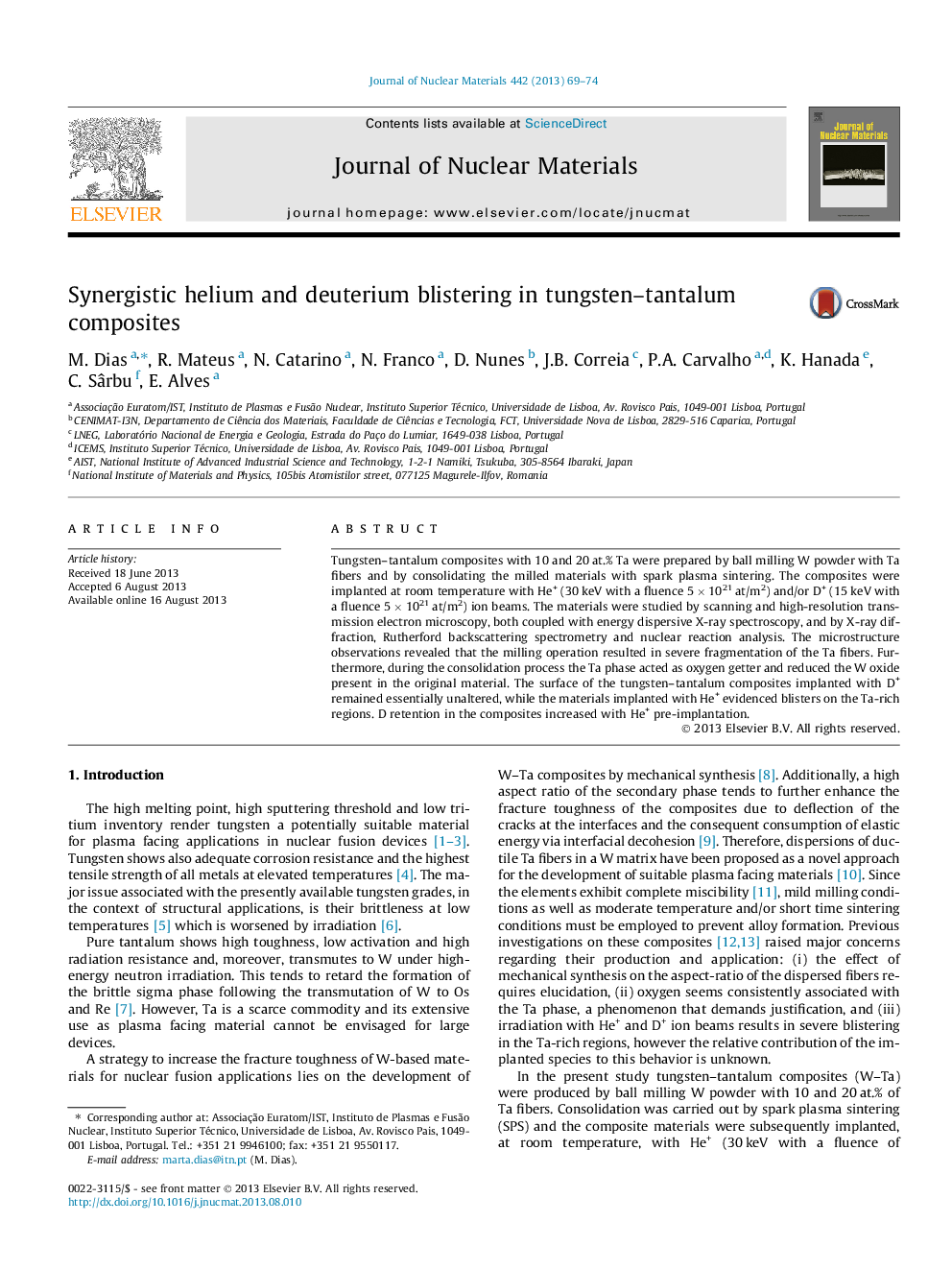| Article ID | Journal | Published Year | Pages | File Type |
|---|---|---|---|---|
| 1565351 | Journal of Nuclear Materials | 2013 | 6 Pages |
AbstructTungsten–tantalum composites with 10 and 20 at.% Ta were prepared by ball milling W powder with Ta fibers and by consolidating the milled materials with spark plasma sintering. The composites were implanted at room temperature with He+ (30 keV with a fluence 5 × 1021 at/m2) and/or D+ (15 keV with a fluence 5 × 1021 at/m2) ion beams. The materials were studied by scanning and high-resolution transmission electron microscopy, both coupled with energy dispersive X-ray spectroscopy, and by X-ray diffraction, Rutherford backscattering spectrometry and nuclear reaction analysis. The microstructure observations revealed that the milling operation resulted in severe fragmentation of the Ta fibers. Furthermore, during the consolidation process the Ta phase acted as oxygen getter and reduced the W oxide present in the original material. The surface of the tungsten–tantalum composites implanted with D+ remained essentially unaltered, while the materials implanted with He+ evidenced blisters on the Ta-rich regions. D retention in the composites increased with He+ pre-implantation.
